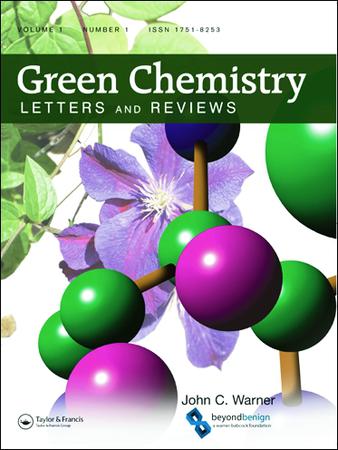Using systems thinking to connect green principles and United Nations Sustainable Development Goals in a reaction stoichiometry module
IF 5.8
3区 化学
Q1 CHEMISTRY, MULTIDISCIPLINARY
引用次数: 0
Abstract
ABSTRACT To help students address problems related to climate change, chemistry fundamentals are taught using sustainable principles. The principles of green chemistry and United Nations Sustainable Development Goals (SDGs) are guides to help us reach a sustainable future. Educators use these to create resources to connect green principles and sustainability goals. Systems thinking provides the method for creating relevant lectures, meaningful activities, and cohesive assessments in an educational module. A week-long stoichiometry module for introductory chemistry is described. Students tackle multiple learning outcomes to answer complex questions such as ‘what makes an reaction efficient?’. This module relates SDGs #7 and #13, clean energy and climate action, to the green principle of atom economy, which evaluates the efficiency of chemical transformations. The process of backward design is used with systems thinking to map learning outcomes across the module. Students demonstrate skills related to individual outcomes and use their knowledge to evaluate chemical systems from multiple perspectives across outcomes. Incorporating real-world examples the module explores how incomplete combustion impacts human health and the environment while exploring the material efficiency of making different fuels. The context and practice of sustainable science can be used to teach chemistry in a systematic way. GRAPHICAL ABSTRACT在反应化学计量学模块中,运用系统思维将绿色原则与联合国可持续发展目标联系起来
本文章由计算机程序翻译,如有差异,请以英文原文为准。
求助全文
约1分钟内获得全文
求助全文
来源期刊

Green Chemistry Letters and Reviews
CHEMISTRY, MULTIDISCIPLINARY-GREEN & SUSTAINABLE SCIENCE & TECHNOLOGY
CiteScore
9.10
自引率
3.00%
发文量
48
期刊介绍:
Green Chemistry Letters and Reviews is an Open Access, peer-reviewed journal focused on rapid publication of innovative new syntheses and procedures that reduce or eliminate the use and generation of hazardous materials. Reviews of state-of-the-art green chemistry technologies are also included within the journal''s scope.
Green Chemistry Letters and Reviews is divided into three overlapping topic areas: research, education, and industrial implementation. The journal publishes both letters, which concisely communicate the most time-sensitive results, and reviews, which aid researchers in understanding the state of science on important green chemistry topics. Submissions are encouraged which apply the 12 principles of green chemistry to:
-Green Chemistry Education-
Synthetic Reaction Pathways-
Research and Process Analytical Techniques-
Separation and Purification Technologies-
Renewable Feedstocks-
Degradable Products
 求助内容:
求助内容: 应助结果提醒方式:
应助结果提醒方式:


